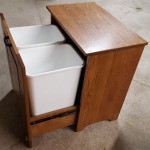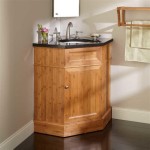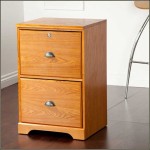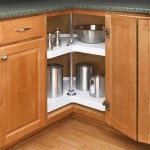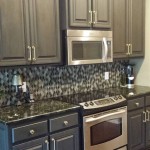How To Finish Raw Wood Cabinets
Finishing raw wood cabinets is a rewarding project that enhances the beauty and longevity of the cabinetry. A proper finish protects the wood from moisture, stains, and daily wear and tear. This process involves several steps, each requiring attention to detail for optimal results.
Preparation
Proper preparation is crucial for a smooth and durable finish. This stage ensures that the finish adheres correctly and highlights the wood's natural beauty.
- Cleaning: Remove any dust, dirt, or debris with a tack cloth or a slightly damp cloth. Allow the wood to dry completely before proceeding.
- Sanding: Sand the cabinet surfaces with progressively finer grits of sandpaper, starting with 120-grit and moving up to 220-grit. This creates a smooth surface for the finish to bond with.
- Filling: If any imperfections exist, such as knots or cracks, fill these with wood filler. Allow the filler to dry completely and sand smooth.
- Taping: Use painter's tape to mask off any areas that should not be finished, such as hinges or interior surfaces.
Choosing a Finish
Several types of wood finishes are available, each offering different levels of protection and aesthetic appeal.
- Paint: Provides a solid, opaque finish that hides the wood grain while offering excellent protection. Available in various colors and sheens.
- Stain: Enhances the natural grain of the wood while adding color. Penetrates the wood fibers, offering moderate protection.
- Varnish: Creates a durable, protective layer on the wood surface. Available in various sheens, from matte to high gloss.
- Lacquer: Dries quickly and provides a hard, durable finish. Often used for a high-gloss look.
- Polyurethane: Offers excellent durability and water resistance, making it a popular choice for kitchen cabinets. Available in various sheens.
- Oil: Penetrates the wood, enhancing its natural beauty and providing moderate protection. Requires regular reapplication.
Applying the Finish
The application method varies depending on the chosen finish. Careful application ensures an even and professional-looking result.
- Brush Application: Use a high-quality brush specifically designed for the chosen finish. Apply the finish in thin, even coats, following the wood grain.
- Spray Application: Provides a smooth, even finish, particularly for lacquer and polyurethane. Requires specialized equipment and a well-ventilated area.
- Wipe-On Application: Suitable for oils and certain stains. Apply the finish with a clean cloth, working in the direction of the wood grain.
Drying and Curing
Allowing adequate drying and curing time is essential for a durable and long-lasting finish. Consult the manufacturer's instructions for specific drying times.
- Drying Time: Refers to the time it takes for the finish to be dry to the touch.
- Curing Time: Refers to the time it takes for the finish to reach its maximum hardness and durability.
- Environmental Considerations: Temperature and humidity can affect drying and curing times.
Sanding Between Coats
Sanding between coats of finish creates a smoother and more refined surface. It removes any imperfections and ensures optimal adhesion between coats.
- Grit Selection: Use a fine-grit sandpaper, such as 320-grit, for sanding between coats.
- Light Pressure: Apply light pressure to avoid sanding through the finish.
- Dust Removal: Thoroughly remove any sanding dust before applying the next coat.
Applying Multiple Coats
Multiple coats of finish provide enhanced protection and durability. The number of coats required varies depending on the chosen finish and the desired level of protection.
- Thin Coats: Apply thin coats to prevent drips and runs.
- Drying Time Between Coats: Allow each coat to dry completely before applying the next.
- Final Coat: The final coat may require a slightly different application technique, depending on the chosen finish. Consult the manufacturer's instructions.
Clean Up and Maintenance
Proper clean-up and maintenance ensure the longevity and beauty of the finished cabinets.
- Brush Cleaning: Clean brushes thoroughly immediately after use with the appropriate solvent recommended for the chosen finish.
- Regular Cleaning: Use a soft, damp cloth to clean the finished cabinets. Avoid harsh chemicals or abrasive cleaners.
- Refinishing: Depending on the type of finish and the amount of wear and tear, refinishing may be required periodically.

Easiest Raw Wood Finish With Paint No Stripping Needed

How To Finish Raw Wood Furniture Without A Sprayer

How To Stain Unfinished Cabinets Painting By The Penny

How To Finish Raw Wood Furniture Without A Sprayer

How To Finish Raw Wood Without Changing Its Color The Navage Patch

How To Finish Wood Cabinets Cabinet Doors N More

How To Create A Raw Wood Finish On Vintage Furniture

How To Stain Unfinished Cabinets Painting By The Penny

How To Get The Perfect Raw Wood Finish Little House Of Four Creating A Beautiful Home One Thrifty Project At Time

Diy Rustic Raw Wood Finish Process Pine And Prospect Home
Related Posts

